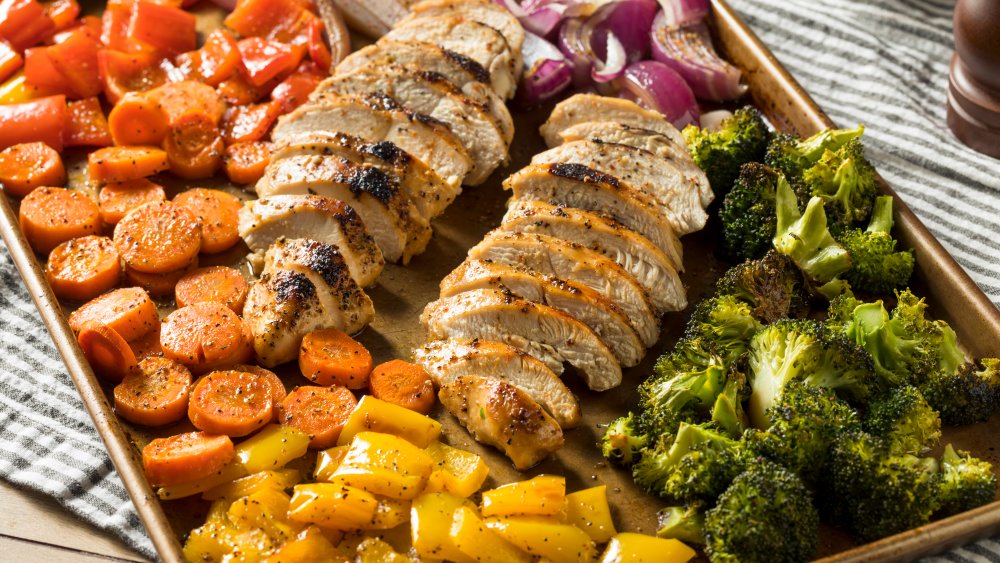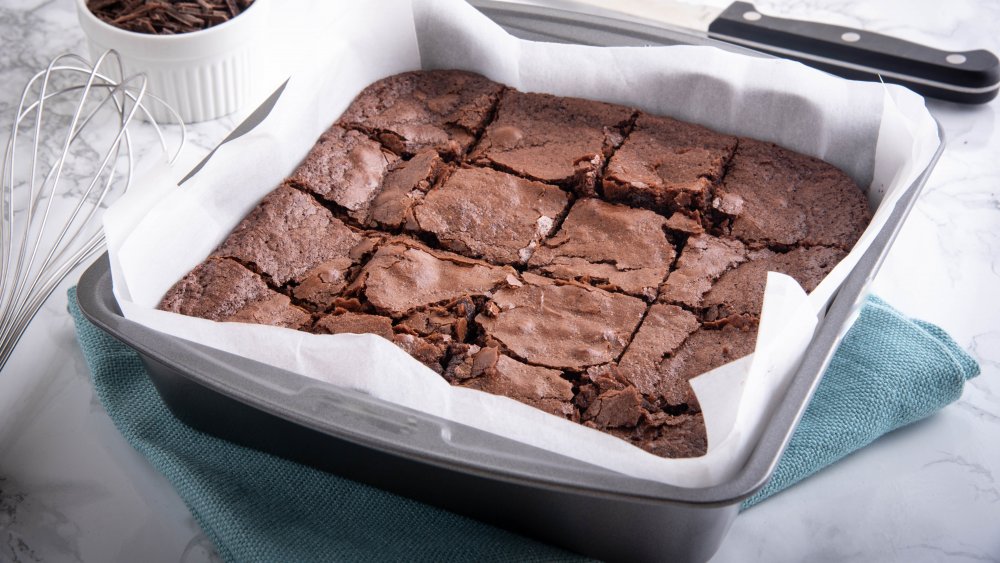The Real Difference Between Sheet Pans And Baking Pans
Sheet pans and baking pans might sound pretty much the same or even be used interchangeably in the kitchen thanks to their versatility. Baking pans are one of the most multi-functional pieces of equipment in the kitchen, after all. They're suited to roasting meat and vegetables among many other items. However, there are differences between sheet pans and baking pans.
One notable shortcoming of baking pans involves the negative reactions that can occur between acidic ingredients, such as a squeeze of lemon over vegetables, and the metal. That's why it is necessary to line the baking pan with parchment paper or even a reusable silicone sheet. Not only does it preserve your baking pan, but it prevents sticking and makes cleanup a breeze (via Chowhound). While the metal's reaction is important, it isn't the primary difference between sheet pans and baking pans. It actually has a lot more to do with the details of the pans' designs and functions.
It's all about the depth of the pan
Baking pans and sheet pans can both be rectangular metal cooking pans, but sheet pans have short raised sides all the way around the pan. This helps the pans retain any liquids or juices that might otherwise be lost while cooking. So, if you roast meat on a rack on a baking pan, the juices will drip down and be caught and held by the baking pan.
Baking pans, on the other hand, are deeper and come in a wide selection of shapes, sizes, and even materials. Baking pans can be made of metal like sheet pans, but they can also be made of stoneware, glass, ceramic, and reinforced silicone, according to Chowhound. Glass is the best heat conductor; however, glass can also cause your dish to burn more easily (via KitchenAria). Metal is the most common material you'll find for baking pans since it is easy to clean.
So, whatever you choose to cook with, just know that sheet pans have raised sides and are more shallow while baking pans are much deeper.

